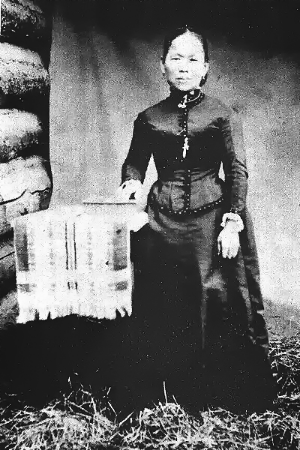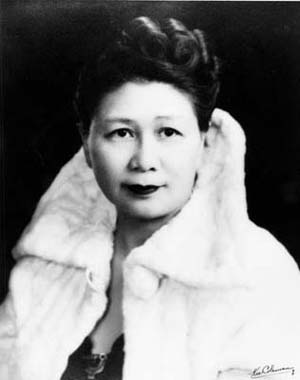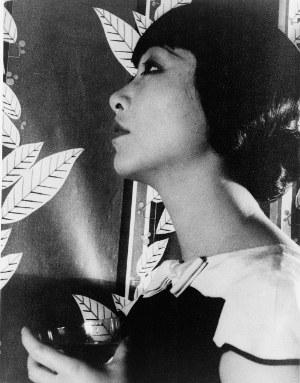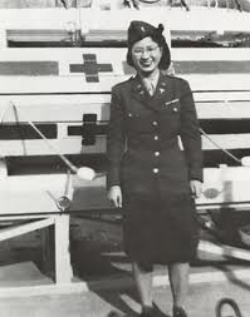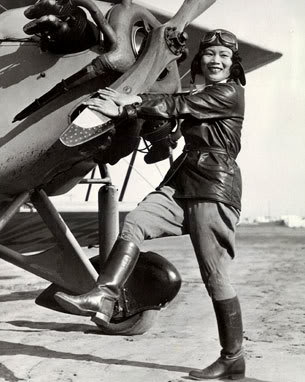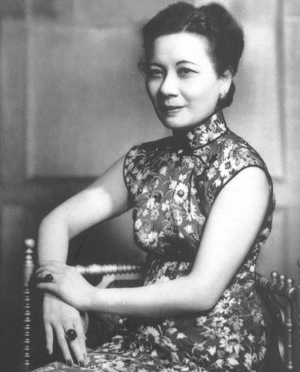Notable Women
The America we know today is built by generations of people who dreamed and struggled to build a better life. Here is a list of notable Chinese American women who triumphed against circumstances, and paved the road towards the American Dream for upcoming generations.
POLLY BEMIS
Sold against her will for 2 bags of seed, Polly was brought to America in 1872 likely as a prostitute or concubine. She was “won” by Charlie Bemis in a poker game and would go on to marry Bemis. Over the course of 40 years, Polly Bemis would become a pillar of her community, not only saving the life of her husband on 2 separate occasions but also nursing numerous neighbors and miners back to health. Her kindness and hospitality won her great respect within the community. When she passed away in 1933, a creek was named in her honor. And today, the Polly Bemis house in Salmon River, Idaho has been placed on the U.S National Register of Historic Places. Polly Bemis was inducted into the Idaho Hall of Fame in 1996 and her story has also been adapted into a novel and movie called “A Thousand Pieces of Gold.”
MARY TAPE
Mary Tape
An accomplished photographer and painter, the educated and Westernized Tape would file a lawsuit against the Spring Valley School in San Francisco, California when the school denied her 8 year old, American-born daughter admittance to the school based on her race. This was the year 1884, a time when such acts of racial segregation was a widely accepted norm while a Chinese woman with the audacity to stand up against the white establishment was practically unheard of. Not only would Mary Tape take the principal Jenny Hurley to the Supreme Court, she would go a step further by suing the board of education on the grounds that they were violating the “California Political code.” In the famous Tape V. Hurley case, the judge would in a groundbreaking decision, rule in Mary Tape’s favor.
MARGARET CHUNG
Margaret Chung
Born in 1889, Margaret Chung was known as the first Chinese-American woman physician. She graduated from USC in 1916 as one of the only female medical students in an otherwise all-male school, and would go on to establish the first Western medical clinic in San Francisco’s Chinatown. Known as Doctor “Mom” Chung to the Fair-Haired Bastards (an American aviator’s club), the Kiwis (the non-flying military personnel) and the Golden Dolphins (the submarine auxiliary), Margaret Chung was known to have adopted 1500 “sons” which included U.S senators, congressmen and other high-ranking officers. Her Sunday dinners were legion and anywhere from 75-100 military personnel would come to her house each week. Using her connections to lobby support, Chung was a key force in establishing WAVES, the women’s auxiliary unit of the U.S Navy. Although Chung’s sexual orientation was never established, it was speculated that she was blacklisted from the White House due to their suspicion that she was a lesbian. As a result, she was never given credit for her important role in forming WAVES.
LOUISE LEUNG LARSON
Louise-Leung Larson was the first Chinese-American woman and the first Asian-American reporter to work for a major metropolitan American newspaper. She started her career in the 1926, but despite the challenges posed by the time, she never saw her race or gender as a liability. Rather, she saw it as an asset. With a career that spanned 51 years, she wrote for publications such as the San Francisco News, Chicago Daily Times, Los Angeles Daily and the Los Angeles Times. She would also author the book “Sweet Bamboo,” a memoir of her family and an important document on the lives of early Chinese-Americans.
ANNA MAY WONG
Anna May Wong - See Notes for Photo Credit
Born in Los Angeles at the turn of the 20th century, Anna May Wong was the first and the original Chinese-American movie star. With beauty, talent and drive, she was destined for the Silver Screen. As Hollywood started to prosper and enter into its golden era, Anna May Wong’s star would also begin to rise with roles in classics such as “Thief of Baghdad,” “Toll of the Sea” and “Shanghai Express.” She was charismatic, glamorous and a critically acclaimed actress. She was a star, and yet she could never be THE star and would instead spend a lifetime being cast in supporting roles.
Anna May Wong’s career was defined by her fight against being typecast in stereotypical roles that relegated the Chinese to either the evil, scheming Dragon Lady types that further depicted Chinese people as the “Yellow Peril” or the delicate and sacrificial “blossom” who in her own words must, “always die in the movies, so that the white girl with the yellow hair may get the man.” Furthermore, whenever there is a need to cast a leading role for a Chinese character, such roles would never go to someone like Anna May Wong, a natural choice. Instead it would always be given to Caucasians, who would be made up to look “Asian.”
Anna May Wong would die prematurely in 1961, at the age of 56, never to see the true influence of her legacy and her star immortalized on the Hollywood Boulevard’s Walk of Fame.
HELEN PON ONYETT
Helen Pon Onyett
Stationed as a nurse in North Africa during WWII and earning the Legion of Merit for her work, Helen Pon Onyett would, in 1971, also be the first Chinese American woman to be promoted to the rank of a Colonel after having served more than 30 years in the reserves.
KATHERINE CHEUNG
Katherine Cheung
It was the year 1932 when Katherine Cheung became a licensed pilot. She was the first Chinese American woman to do so, shattering societal and gender barriers in an era when only 1% of American pilots were women. As she once said, “I don't see why women have to stay in the kitchen, when instead they could learn to fly.” But Katherine Cheung was not just an aviatrix, she was a daredevil, performing aerial stunts such as acrobatic loops, barrel rolls, inverted flying (inside an open cockpit plane), spiral dives and blind flying at air shows, county fairs and stunt derbies. As Cheung herself would say, “What’s the point of flying a plane, if you can’t have fun doing it?” A member of the Amelia Earhart’s prestigious Ninety Nines flying club as well as the American Aviation Association, Cheung was inducted into the Aviation Hall of Fame in 2001.
MADAME CHIANG KAI-SHEK
She was the glamorous, articulate and elegant First Lady of China who captivated America and motivated large crowds of people to contribute to the war efforts with her eloquent, powerful speeches. Her marriage to Chiang Kai-Shek, the Nationalist leader of China propelled her to the world stage of politics. But the Madame was born Soong May Ling, the youngest daughter of the wealthy and influential Soong family. Educated in the west, Soong May Ling was a Christian, spoke perfect English and was above all, a skilled politician. It was his wife’s brilliance that helped Chiang Kai-Shek lobby support from the United States for his Nationalist party.
Thousands of people would line up along parade routes just to catch a glimpse of the Madame, and her famous speeches would enthrall tens of thousands more. She was a key figure in turning the tide on how Americans perceived Chinese people. LIFE magazine would even call her the “most powerful woman in the world.” With the US and China now allies in WWII and through this wave of newfound popularity inspired by Madame, America’s attitude to the Chinese started to change. A bill to repeal the Chinese Exclusion Act was passed in 1943, just months after Madame’s visit and more than 60 years after the law was first set into place. The repeal of this act was a monumental event that would change the landscape of the Chinese-American community forever.
Reference:
Anna May Wong photo credit: Carl Van Vechten [Public domain], via Wikimedia Commons. http://commons.wikimedia.org/wiki/File%3AAnna_May_Wong_1.jpg
